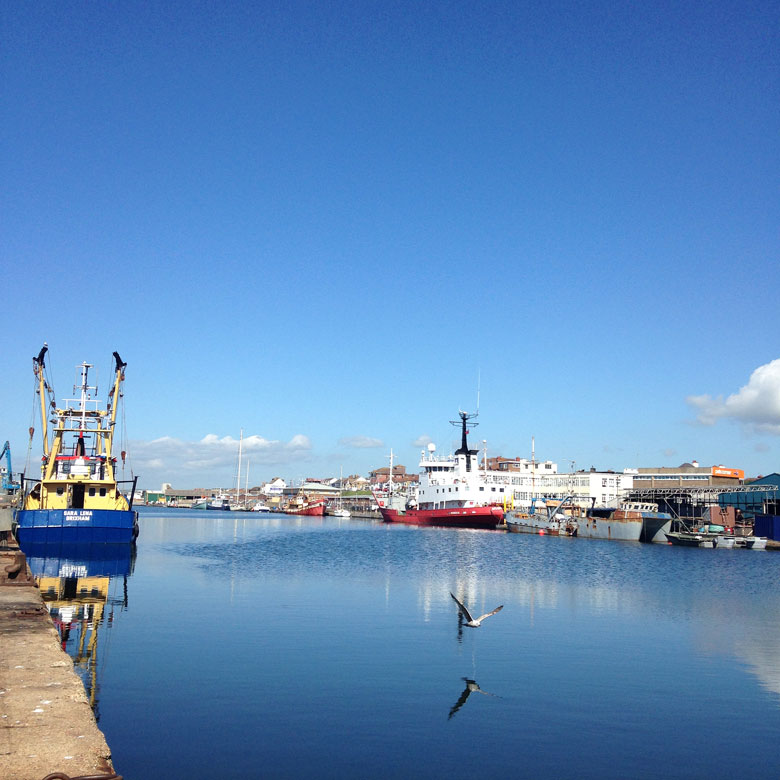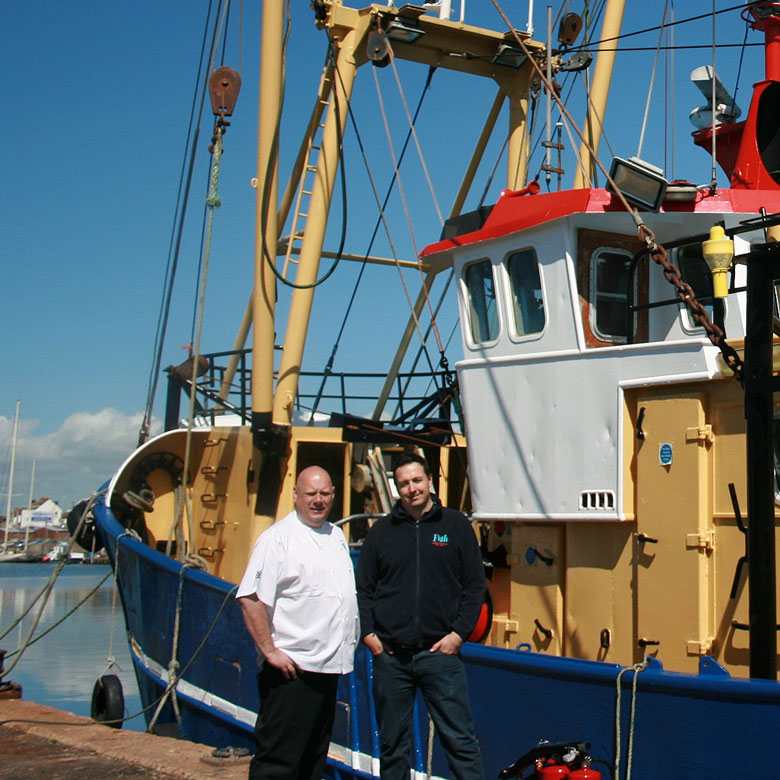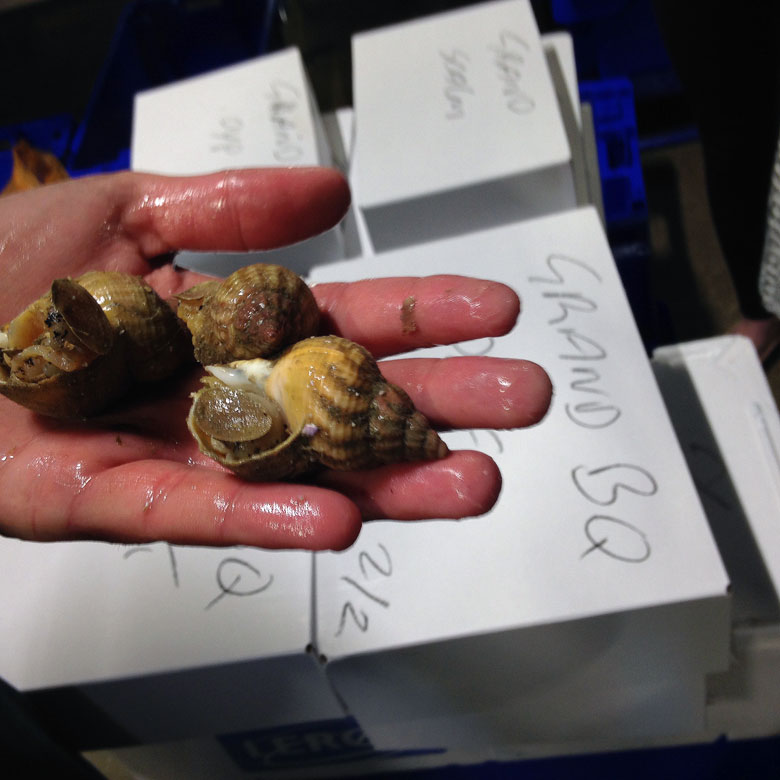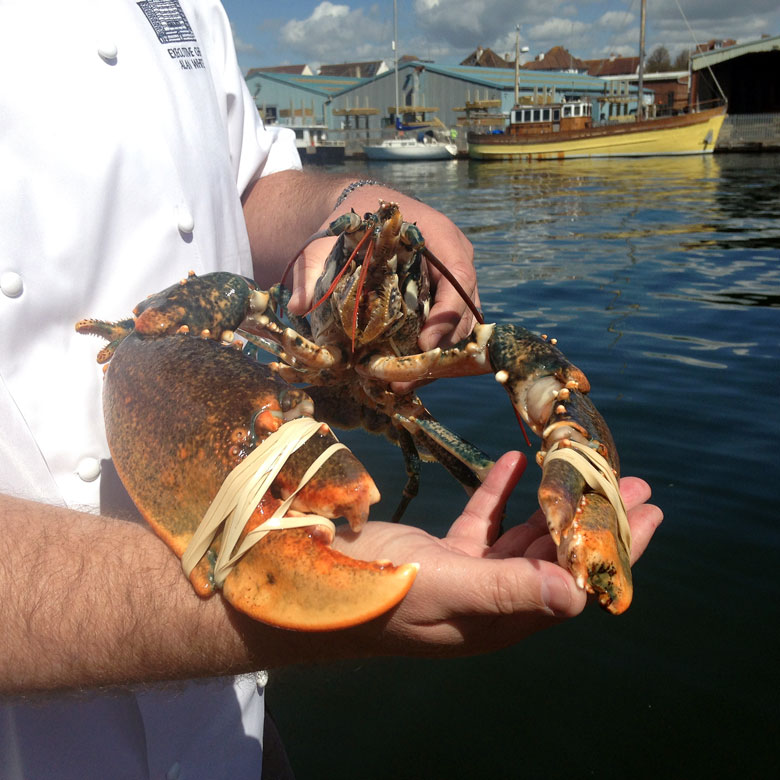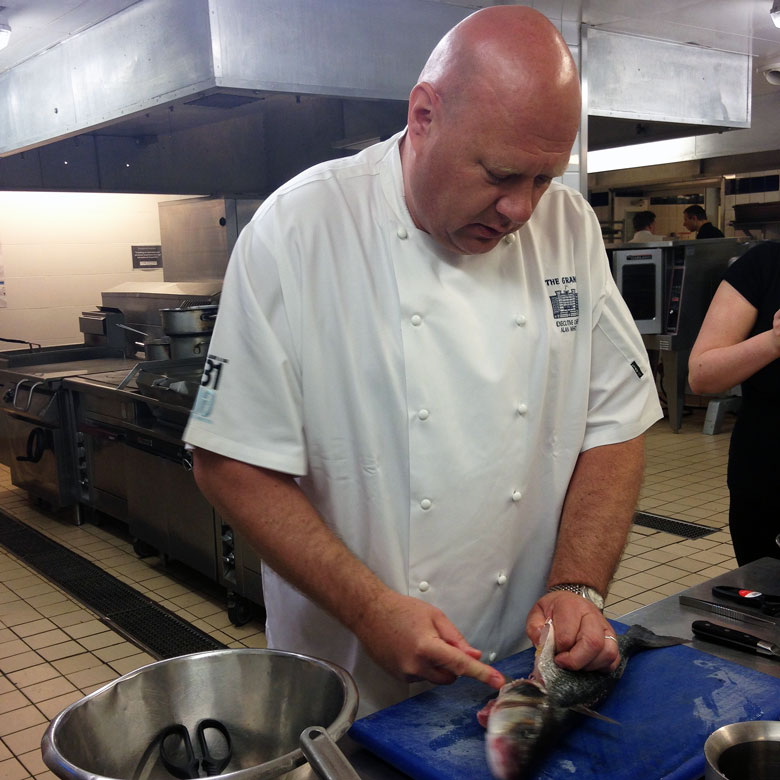Behind the scenes
Brighton is famous for many things, but fishing isn’t one of them. So when Rachel Walker was invited to visit the buzzing harbour on its outskirts, she jumped at the chance to find out more.
“Come to Brighton, my dear fellow,” wrote Beau Brummell, arbiter of Regency fashion, to his friend Cecil Jenkinson, Earl of Liverpool. “Let us be off tomorrow: we’ll eat currant tart and live in chintz and salt-water.”
Those were heady days for Brighton, as it transformed itself from defunct fishing town to fashionable coastal spa. When the Prince Regent cheerfully lavished public funds on the domes and minarets of his exotic Royal Pavilion, creating his own seaside retreat, it became the ultimate getaway for Britain’s fashionable elite.
Brighton has been a tourist magnet ever since, sometimes chic, sometimes shabby, but always drawing a crowd. Today it attracts around 8 million visitors a year, tempted by its classic Brighton rock seaside charm and a more contemporary London-on-sea vibe.
There’s no denying that Brighton has its own style. But unlike other towns along this stretch of coast, such as Shoreham to the west and Hastings to the east, fish hasn’t really been a part of it. So when I learned that there was in fact a buzzing harbour on the outskirts near Portslade, I jumped at the opportunity to go and nose around.
It’s one of the first truly hot mornings of the summer when I meet Kier Foster from Brighton & Newhaven Fish Sales Ltd (BNFS). Having left muggy London and fled south while commuters were piling into the capital, the fresh salty air feels like a tonic: I can see why doctors used to send patients here to recuperate.
The sun pounds on my back as I stand on the harbour walls watching the boats come in. “Look, the lobsters are turning blue,” grins Kier holding one aloft, its legs paddling in mid-air. “It’s a sign that summer is on the way.”
Inside the refrigerated warehouse a short walk away, the boxes of fish showcase the shift in season too. The long spring is being replaced by bountiful summer and the boxes are full of plump Dover sole, pollack, haddock, hake and bass, all still shiny and bright-eyed, some only just entering rigor mortis – what those in the trade call “stiff alive”.
There’s loads of cuttlefish too. “We’re right in the middle of its season,” says Kier. Cuttlefish only have a two-year life cycle. Their first year is spent on the east side of the Cherbourg Peninsula, then they head back to the UK’s south coast to lay their eggs, and within a month they’re dead. “It makes them an incredibly sustainable seafood,” says Kier. “We catch them just before they die anyway.” The bones of the cuttlefish that evade capture wash up on the beach and are fed to budgies.
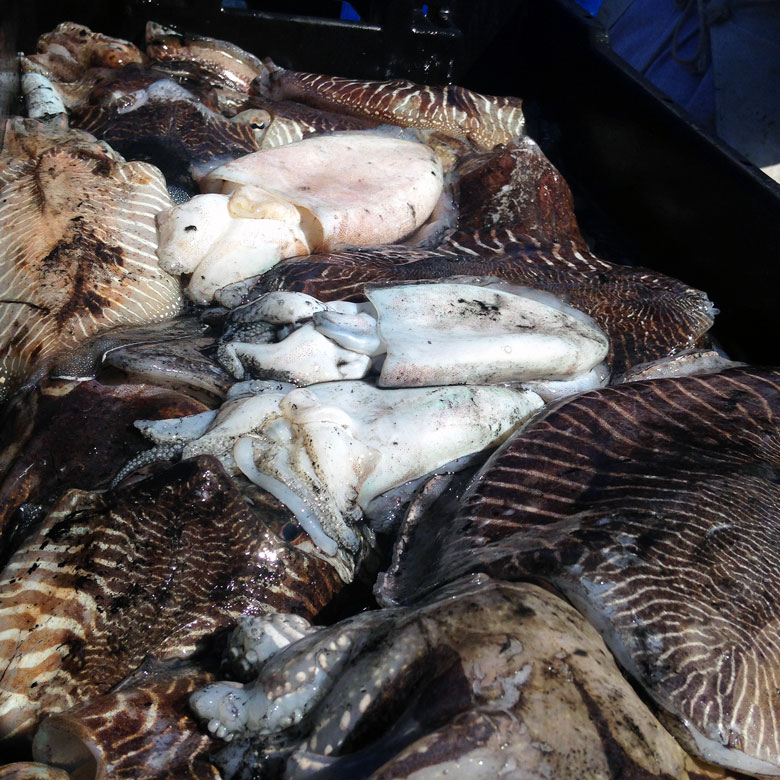
Just as Kier is explaining the cuttlefish’s lifecycle, The Four Sisters, a day boat filled with crates of them pulls in, and everyone on the harbourside leaps into action, jumping in the forklift and unloading the catch. You might have expected local chefs to be here too, jostling over this locally caught, super-fresh produce, but that’s often not the case, says Kier.
“The UK isn’t very good at using its own produce. About 95 per cent of these fish will be boxed up and frozen and sent round the world.” He grabs handfuls of cockles, clams and whelks. “There’s not much of a market here for any of these,” he says. “It’s best to cook the whelks, slice them up and send them to China where they go for £30 a kilo.” Which is why Mat Follas lamented that he couldn’t find any whelks for sale in the UK when he spoke to us a few weeks ago.
As we walk around the big cold store, Kier points out seafood that will fly out of UK fishmongers and supermarkets. But for every one or two desirable varieties, there seem to be several other species that are a tough sell. “Spider crab are a real pain for fishermen,” he says, picking up one of the alien-like creatures, its long legs flailing. “They take half an hour to pick out of nets, and then we usually chuck them back because they’re not worth anything. They’re too much hard work for most customers here.” Meanwhile, over on the continent, notably in Spain, their sweet meat is rightly celebrated as a delicacy.
It’s not all doom and gloom though. My other host for the day is Alan White, Executive Chef at the Grand Brighton. A proper wedding cake of a hotel, the Grand is something of a local icon: dripping in Victorian splendour, it’s all elaborate cornices and hydrangea-filled urns, with a palatial ladies’ powder room.
It’s a resolutely old-school establishment – and Alan has a sourcing approach to match. “I write my menu around what’s being caught,” he says. “I’ll phone ahead and see what’s been landed. Often it’ll just appear on the specials board. But when the shift in what’s being caught indicates the change of the season, I’ll overhaul the whole menu to make sure that the fish we’re serving are seasonal.” To prove his pride in British produce, Alan has even created a seafood afternoon tea: Poole Bay oysters, fresh crab, prawns, mussels, cockles, langoustine and clams.
We’re shadowing Alan as he goes about his day. It’s a new Grand initiative called “Fish and Trip”, which invites guests to learn more about local fish, as well as teaching them some culinary tips along the way. Alan chats away as he looks over the catch, picking out sea bass, plaice and lobster for our cooking challenge later. With Alan’s “catch of the day” in the boot of the car, we head back along the seafront to the Grand.
We bash through two fire doors and down a staircase, into the belly of the building, where it’s hot and loud. The frenzy of activity is a stark contrast to the quiet elegance upstairs. Amid all the subterranean hustle and bustle, Alan is taking a moment to decide what to do with his haul. He picks out a sea bass, fillets it with ease, then flings it into a hot pan, tossing out nuggets of information as he goes along. “Press the fillet flat against the pan for the first few seconds, so it doesn’t curl,” and then a few moments later, “stop the foaming butter from browning by squeezing some lemon juice over it.”
In another pan, he simmers mussels in wine and then adds samphire, cucumber and green pesto before scooping everything into a dish and laying the sea bass fillet on top. “Your turn now,” he grins, and points toward a line of stations set up in a quiet corner of the kitchen – each with a different fish on the board.
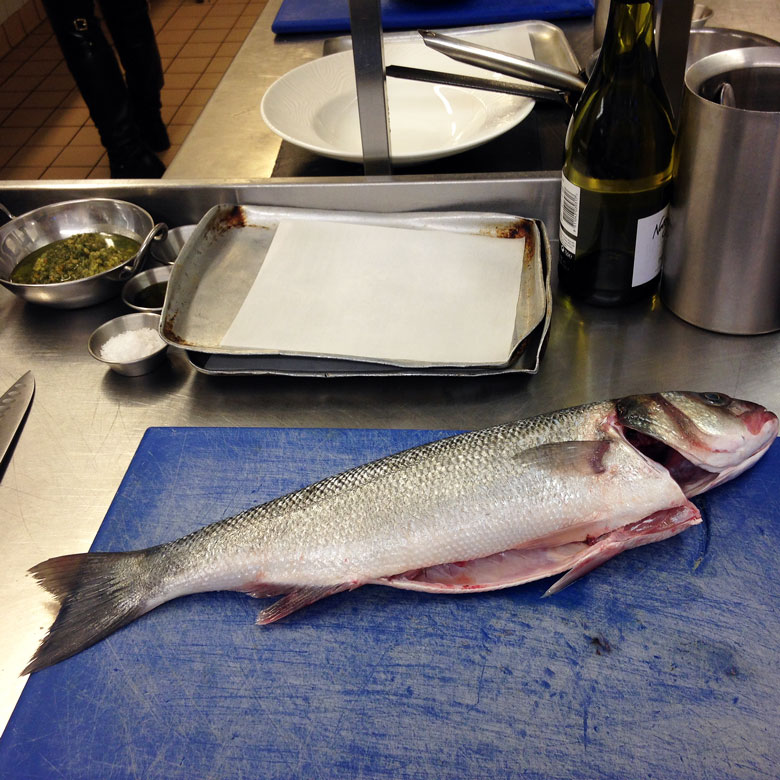
We tentatively fillet the fish in front of us, and then start wondering how best to cook it. I’m beginning to appreciate the flair needed to conceive a “fish of the day” dish on demand. Perhaps it demonstrates the group’s shyness, or perhaps an innate desire to please, that almost everyone pan fries their fillets and places them on top of their own recreation of Alan’s mussel, samphire, cucumber and pesto dish. (All apart from one, who simmers a whole lobster in a pool of butter – good on them.)

Alan has proved his point. The key to good coastal cooking is fresh seafood caught as locally as possible, in waters that diners can actually see from where they’re eating. And there’s something about the flamboyance of a seafood-themed afternoon tea, or the decadence of a lobster drowned in butter, that sits perfectly with Brighton after all. Hedonism-on-sea, you might say. What more could you ask for?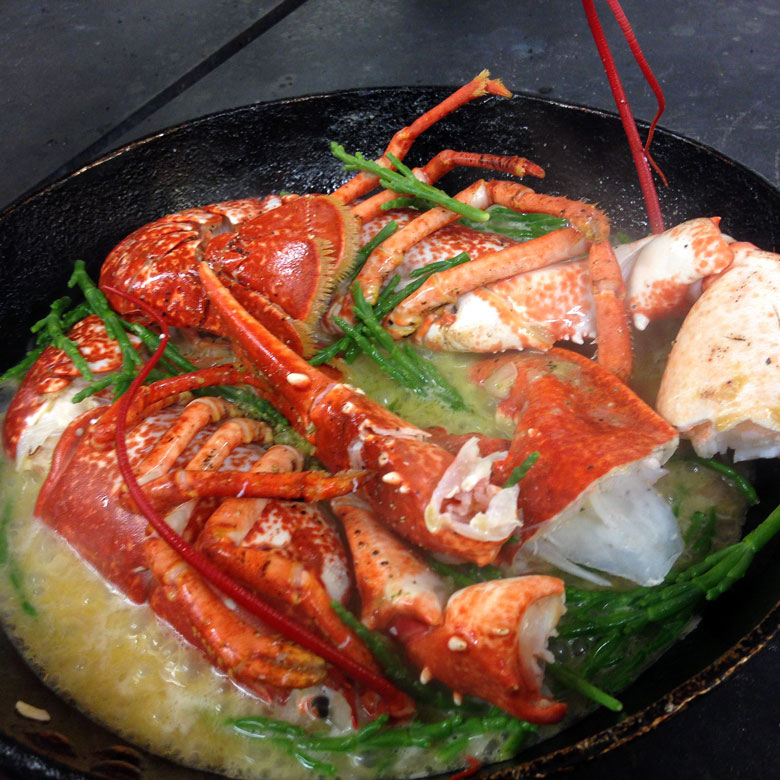
For more information on BNFS, visit: www.brighton-fish-sales.co.uk. For more information on the Grand Brighton, visit: www.grandbrighton.co.uk. Fish landed in Brighton are available locally via the Catchbox fishbox scheme. To find out more, visit: www.catchbox.coop


